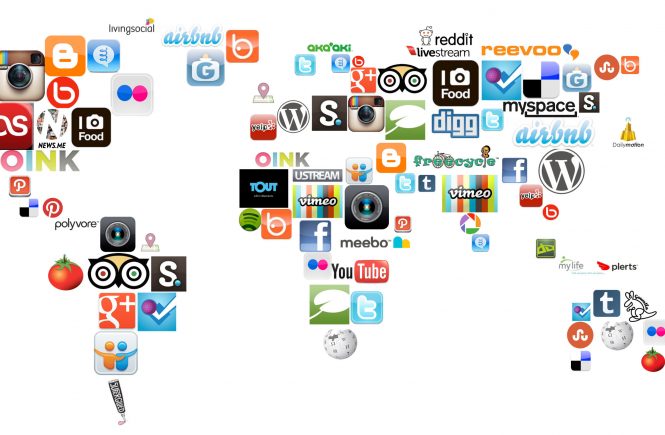Chapter#10: AUDIEMEDIA AND SOCIETY: THE ROLE OF MEDIA IN THE SOCIAL WORLDNCE THEORIES: USES, RECEPTION, AND EFFECTS Information (Innovation) Diffusion Theory In 1962, Everett Rogers information/ innovation diffusion theory Theory that explains how innovations are introduced and adopted by various communities Meta Analysis Identifies important consistencies in previous research findings on a specific issue and systematically integrate them into a fuller understanding Early Adopters In information/ innovation diffusion theory, people who adopt an innovation early, even before receiving significant amounts of information Change agents In information/ innovation diffusion theory, those who directly influence early adopters and opinion leaders Strengths Weakness 1. Integrates large amount of empirical findings into useful theory 2. Provides practical guide for information campaigns in United States and abroad 1. Is linear and source-dominated 2. Underestimates power of media, especially contemporary media 3. Stimulates adoption by groups that don’t understand or want the innovation Social Marketing Theory […]
AUDIENCE THEORIES: USES, RECEPTION, AND EFFECTS
Chapter#9: AUDIENCE THEORIES: USES, RECEPTION, AND EFFECTS Audience Theories: From Source-Dominated to Active-Audience Propaganda theories are concerned with audiences. The power of propaganda resides in its ability to quickly reach vast audiences and expose them to the same simple but subversive messages. In these theories, the propagandist dominates the audience and controls the messages that reach it. The focus is on how propagandists are able to manipulate audiences using messages that affect them as the propagandist intends. Most are source-dominated theories. They center their attention primarily on message sources and content, not on the audiences the sources want to influence. As media theories have developed, this focus has gradually shifted. As early as the 1940s, the work of people like Herta Herzog, Paul Lazarsfeld, and Frank Stanton reflected at least the implicit concern for studying an active, gratifications-seeking audience. Lazarsfeld and Stanton (1942) produced a series of books and studies […]
Four Eras Of Mass Media Theory (Review)
Mass Communication Theory Foundations, Ferment, and Future Review of Chaper 2: FOUR ERAS OF MEDIA THEORY We have identified four distinct eras in the development of mass communication theories, beginning with the origin of media theory in the nineteenth century and ending with the emergence of an array of contemporary perspectives. THE ERA OF MASS SOCIETY AND MASS CULTURE The era of mass society theory is characterized by overinflated fears of media’s influence on “average” people and overly optimistic views of their ability to bring about social good. Powerful social and cultural elites, who saw the traditional social order that was serving them so well undermined by popular media content, were the primary advocates of the former view. Urban elites—the new capitalists whose power was increasingly based on industrialization and urbanization—viewed technology, including the mass media, as facilitating control over the physical environment, expanding human productivity, and generating new forms […]
Techniques for Measuring the Effects of Advertising Campaign
Discuss the various strategies and techniques for measuring advertising campaign. Techniques for Measuring the Effects of Advertising Campaign: There are many advertising campaign effectiveness measurement techniques in use. These techniques are divided into classes and then evaluated or measured. Classes of Measurement Techniques Advertising campaign effectiveness measurement techniques can be classified as measuring cognitive response, effective response and conative response. A cognitive response measurement technique evaluates changes in subject’s knowledge; an effective response measurement technique measures dhanges in consumer’s attitudes towards a product; and a conative response measurement determines the action that consumers take towards a product. Approach to Examining Measurement In selecting each measurement technique, two related questions or approaches must be considered. Does the measurement technique meet the criteria for measurement techniques i.e., is the technique accurate and valid? The advertiser must select a measurement technique that measures the particular element to be evaluated. The analysis of measurement […]
Effects of Information Technologies
With the existing new technologies and innovations emerging every other day, the information technology is an increasingly interesting platform not just for developers, but also for all sorts of non-technical common people. With the need for making things easier in the daily life and with the technological advancements, more and more daily activities are shifting online. Having said this, the web can be a very useful tool as well as an intimidating proposition at the same time. Computer based technology and information systems are actually quite large and vast spread in their utility, have broader spectrum and details. For instance when anyone uses the web for browsing, sending or receiving e-mails, playing online games or even sharing multimedia files with others, all the data has to pass through a set of complicated networks and soft-wares. There are many processes involved that are responsible for management of such systems. The prime […]
